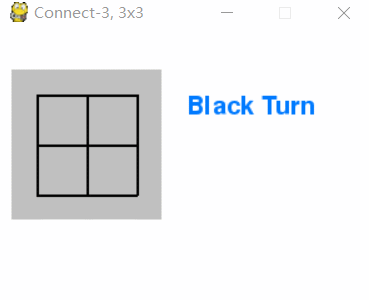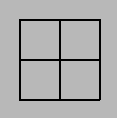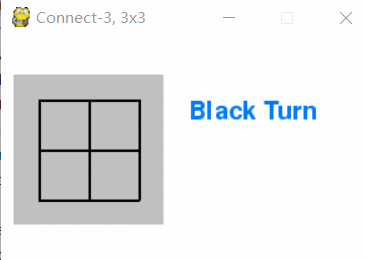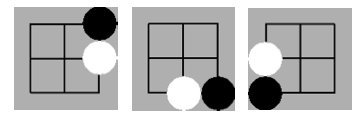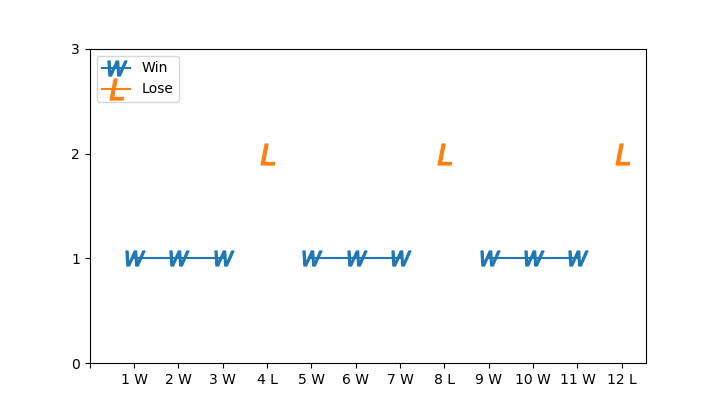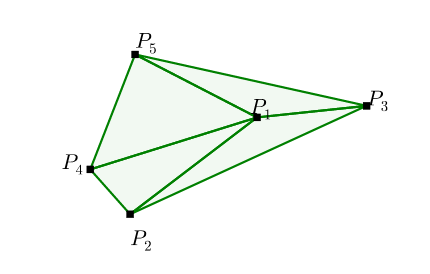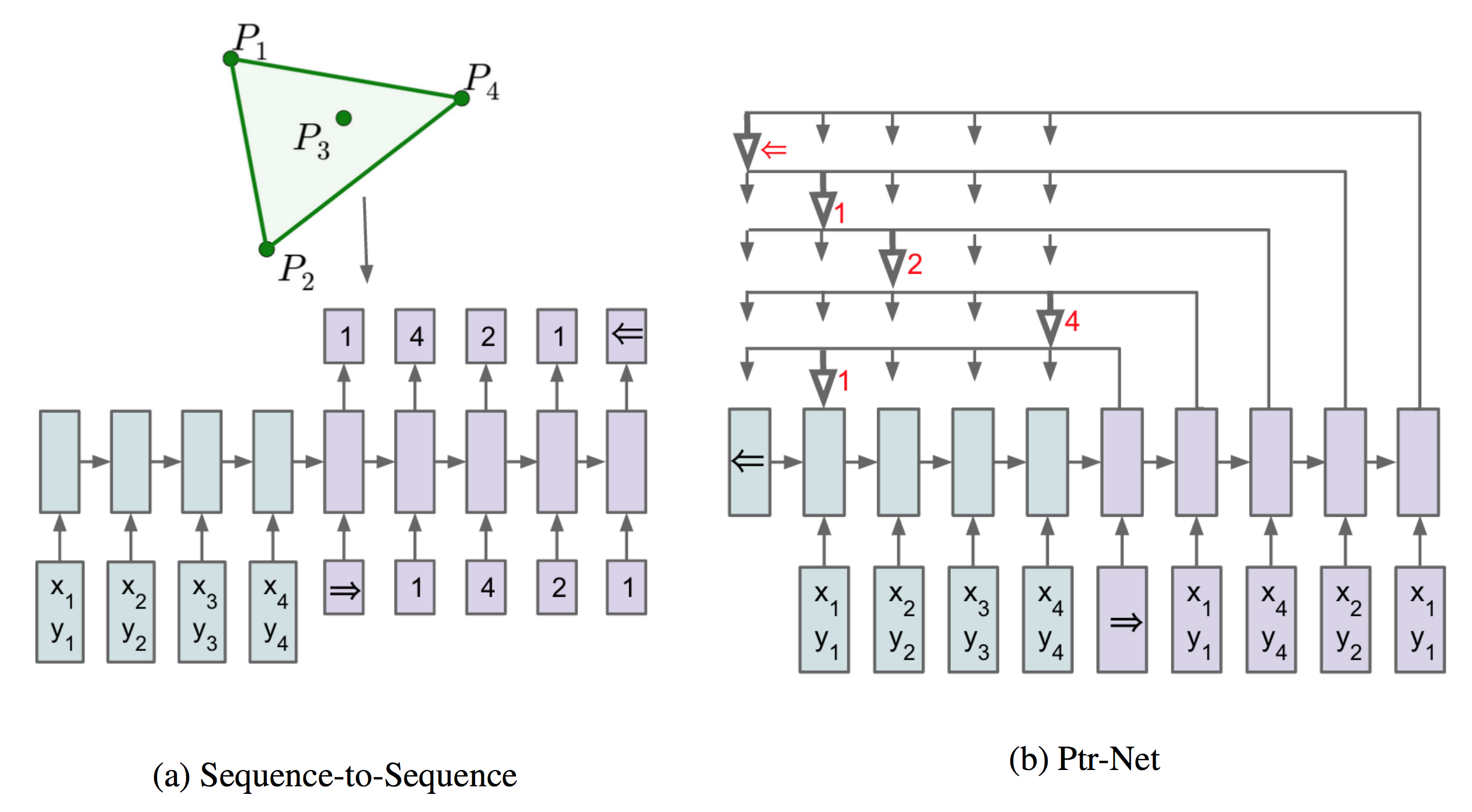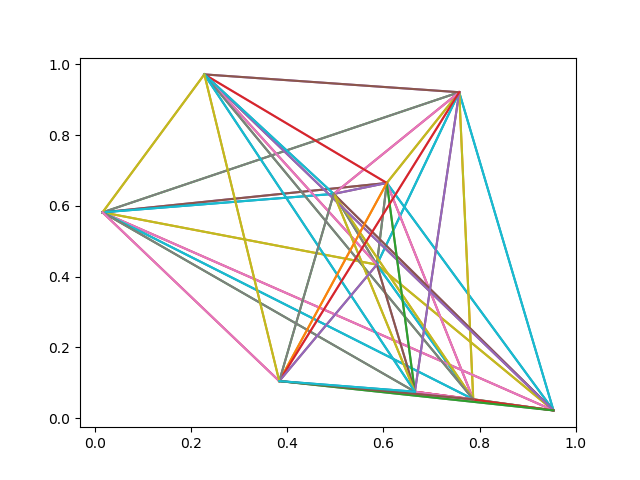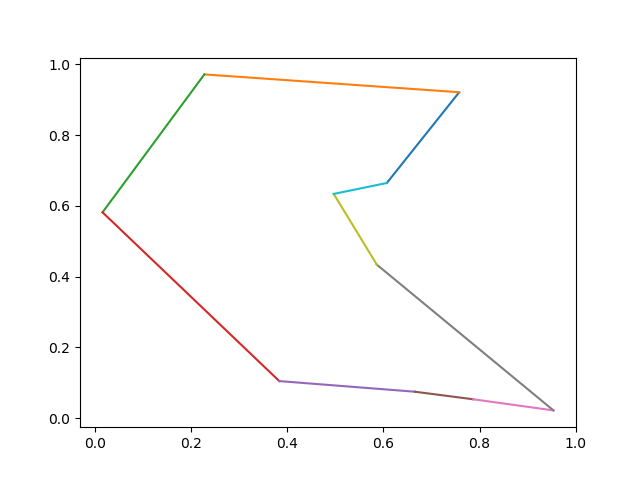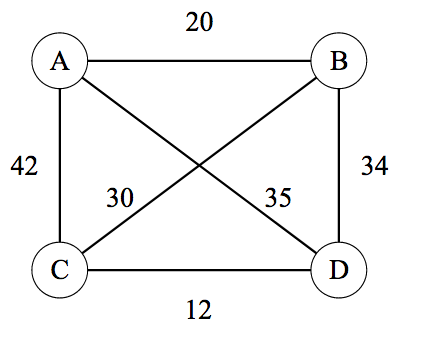CV / Object Detection
2207.10758 DEVIANT: Depth EquiVarIAnt NeTwork for Monocular 3D Object Detection
Arxiv Link: http://arxiv.org/abs/2207.10758
Github Link: https://github.com/abhi1kumar/deviant
Authors: Abhinav Kumar Garrick Brazil
Enrique Corona Armin Parchami Xiaoming
Liu
Tag: object detection neural network
2207.10774 Focused Decoding Enables 3D Anatomical Detection by Transforme
Arxiv Link: http://arxiv.org/abs/2207.10774
Github Link: https://github.com/bwittmann/transoar
Authors: Bastian Wittmann Fernando Navarro
Suprosanna Shit Bjoern Menze
Tag: object detection attention mechanism
vision transformer transformer encoder
encoder-decoder architecture
2207.10936 Long-tailed Instance Segmentation using Gumbel Optimized Lo
Arxiv Link: http://arxiv.org/abs/2207.10936
Github Link: https://github.com/kostas1515/gol
Authors: Konstantinos Panagiotis Alexandridis
Jiankang Deng Anh Nguyen Shan
Luo
Tag: instance segmentation object
detection
2207.11031 MobileDenseNet: A new approach to object detection on mobile device
Arxiv Link: http://arxiv.org/abs/2207.11031
Github Link: https://github.com/hajizadeh/mobiledensenet
Authors: Mohammad Hajizadeh Mohammad
Sabokrou Adel Rahmani
Tag: real-time pascal voc source
code object detection
2207.11103 DeVIS: Making Deformable Transformers Work for Video Instance Segmentation
Arxiv Link: http://arxiv.org/abs/2207.11103
Github Link: https://github.com/acaelles97/devis
Authors: Adrià Caelles Tim Meinhardt
Guillem Brasó Laura Leal-Taixé
Tag: video instance segmentation video
sequence feature map object detection
instance segmentation segmentation task
2207.11184 Multi-Faceted Distillation of Base-Novel Commonality for Few-shot Object Detection
Arxiv Link: http://arxiv.org/abs/2207.11184
Github Link: https://github.com/wushuang1998/mfdc
Authors: Shuang Wu Wenjie Pei Dianwen
Mei Fanglin Chen Jiandong Tian
Tag: memory bank object detection
object detector
2207.08531 ID-M3D: Decoupling Instance Depth for Monocular 3D Object Detection
Arxiv Link: http://arxiv.org/abs/2207.08531
Github Link: https://github.com/spengliang/did-m3d
Authors: Liang Peng Xiaopei Wu Zheng
Yang Haifeng Liu Deng Cai
Tag: depth estimation object detection
data augmentation ablation study
2207.11368 Neural-Sim: Learning to Generate Training Data with NeRF
Arxiv Link: http://arxiv.org/abs/2207.11368
Github Link: https://github.com/gyhandy/neural-sim-nerf
Authors: Yunhao Ge Harkirat Behl
Jiashu Xu Suriya Gunasekar Neel
Joshi
Tag: computer vision model computer vision
detection task object detection vision
model application scenario synthetic
data
2207.11455 UC-OWOD: Unknown-Classified Open World Object Detection
Arxiv Link: http://arxiv.org/abs/2207.11455
Github Link: https://github.com/johnwuzh/uc-owod
Authors: Zhiheng Wu Yue Lu Xingyu
Chen Zhengxing Wu Liwen Kang
Tag: object detection computer vision
object detector
2207.11753 Label-Guided Auxiliary Training Improves 3D Object Detecto
Arxiv Link: http://arxiv.org/abs/2207.11753
Github Link: https://github.com/fabiencode/lg3d
Authors: Yaomin Huang Xinmei Liu
Yichen Zhu Zhiyuan Xu Chaomin
Shen
Tag: object detection point cloud
object detector bounding box
2207.12654 ProposalContrast: Unsupervised Pre-training for LiDAR-based 3D Object Detection
Arxiv Link: http://arxiv.org/abs/2207.12654
Github Link: https://github.com/yinjunbo/proposalcontrast
Authors: Junbo Yin Dingfu Zhou
Liangjun Zhang Jin Fang Cheng-Zhong
Xu
Tag: object detection point cloud
receptive field
2207.12655 Semi-supervised 3D Object Detection with Proficient Teache
Arxiv Link: http://arxiv.org/abs/2207.12655
Github Link: https://github.com/yinjunbo/proficientteachers
Authors: Junbo Yin Jin Fang Dingfu
Zhou Liangjun Zhang Cheng-Zhong Xu
Tag: teacher model object detection
contrastive learning supervised learning
point cloud pseudo label autonomous
driving object detector
2207.12716 MV-FCOS3D++: Multi-View Camera-Only 4D Object Detection with Pretrained Monocular Backbone
Arxiv Link: http://arxiv.org/abs/2207.12716
Github Link: https://github.com/tai-wang/depth-from-motion
Authors: Tai Wang Qing Lian Chenming
Zhu Xinge Zhu Wenwei Zhang
Tag: technical report object detection
2207.12988 Monocular 3D Object Detection with Depth from Motion
Arxiv Link: http://arxiv.org/abs/2207.12988
Github Link: https://github.com/tai-wang/depth-from-motion
Authors: Tai Wang Jiangmiao Pang
Dahua Lin
Tag: depth estimation object detection
camera pose
2207.13339 ALBench: A Framework for Evaluating Active Learning in Object Detection
Arxiv Link: http://arxiv.org/abs/2207.13339
Github Link: https://github.com/industryessentials/ymir
Authors: Zhanpeng Feng Shiliang Zhang
Rinyoichi Takezoe Wenze Hu Manmohan
Chandraker
Tag: neural architecture search active
learning neural network architecture neural
network object detection image
classification network architecture neural
architecture
2207.13362 mouflaged Object Detection via Context-aware Cross-level Fusion
Arxiv Link: http://arxiv.org/abs/2207.13362
Github Link: https://github.com/ben57882/c2fnet-tscvt
Authors: Geng Chen Si-Jie Liu Yu-Jia
Sun Ge-Peng Ji Ya-Feng Wu
Tag: benchmark dataset object detection
feature representation
2207.14172 Semantic-Aligned Matching for Enhanced DETR Convergence and Multi-Scale Feature Fusion
Arxiv Link: http://arxiv.org/abs/2207.14172
Github Link: https://github.com/zhanggongjie/sam-detr
Authors: Gongjie Zhang Zhipeng Luo
Yingchen Yu Jiaxing Huang Kaiwen
Cui
Tag: object detection detection performance
feature fusion detection task
2207.14221 Humans disagree with the IoU for measuring object detector localization erro
Arxiv Link: http://arxiv.org/abs/2207.14221
Github Link: https://github.com/ombretta/humans_vs_iou
Authors: Ombretta Strafforello Vanathi
Rajasekart Osman S. Kayhan Oana Inel
Jan van Gemert
Tag: object detector
2207.14284 HorNet: Efficient High-Order Spatial Interactions with Recursive Gated Convolution
Arxiv Link: http://arxiv.org/abs/2207.14284
Github Link: https://github.com/raoyongming/hornet
Authors: Yongming Rao Wenliang Zhao
Yansong Tang Jie Zhou Ser-Nam
Lim
Tag: self-attention object detection
swin transformer imagenet classification
semantic segmentation vision transformer ## CV
/ 3D
2207.10762 MeshLoc: Mesh-Based Visual Localization
Arxiv Link: http://arxiv.org/abs/2207.10762
Github Link: https://github.com/tsattler/meshloc_release
Authors: Vojtech Panek Zuzana Kukelova
Torsten Sattler
Tag: pose estimation feature matching
autonomous robot point cloud camera
pose 3d model
2207.11554 Towards Open Set 3D Learning: A Benchmark on Object Point Cloud
Arxiv Link: http://arxiv.org/abs/2207.11554
Github Link: https://github.com/antoalli/3d_os
Authors: Antonio Alliegro Francesco Cappio
Borlino Tatiana Tommasi
Tag: autonomous system point cloud
safety-critical application 3d model
2207.11790 PatchRD: Detail-Preserving Shape Completion by Learning Patch Retrieval and Deformation
Arxiv Link: http://arxiv.org/abs/2207.11790
Github Link: https://github.com/gitbosun/patchrd
Authors: Bo Sun Vladimir G. Kim Noam
Aigerman Qixing Huang Siddhartha
Chaudhuri
Tag: generative method 3d shape
neural network
2207.12485 3D Shape Sequence of Human Comparison and Classification using Current and Varifold
Arxiv Link: http://arxiv.org/abs/2207.12485
Github Link: https://github.com/cristal-3dsam/humancomparisonvarifolds
Authors: Emery Pierson Mohamed Daoudi
Sylvain Arguillere
Tag: 3d shape ## CV / Point Cloud
2207.10762 MeshLoc: Mesh-Based Visual Localization
Arxiv Link: http://arxiv.org/abs/2207.10762
Github Link: https://github.com/tsattler/meshloc_release
Authors: Vojtech Panek Zuzana Kukelova
Torsten Sattler
Tag: pose estimation feature matching
autonomous robot point cloud camera
pose 3d model
2207.11484 GraphFit: Learning Multi-scale Graph-Convolutional Representation for Point Cloud Normal Estimation
Arxiv Link: http://arxiv.org/abs/2207.11484
Github Link: https://github.com/uestcjay/graphfit
Authors: Keqiang Li Mingyang Zhao
Huaiyu Wu Dong-Ming Yan Zhen
Shen
Tag: 3d point cloud benchmark dataset
attention mechanism point cloud feature
representation
2207.11554 Towards Open Set 3D Learning: A Benchmark on Object Point Cloud
Arxiv Link: http://arxiv.org/abs/2207.11554
Github Link: https://github.com/antoalli/3d_os
Authors: Antonio Alliegro Francesco Cappio
Borlino Tatiana Tommasi
Tag: autonomous system point cloud
safety-critical application 3d model
2207.11753 Label-Guided Auxiliary Training Improves 3D Object Detecto
Arxiv Link: http://arxiv.org/abs/2207.11753
Github Link: https://github.com/fabiencode/lg3d
Authors: Yaomin Huang Xinmei Liu
Yichen Zhu Zhiyuan Xu Chaomin
Shen
Tag: object detection point cloud
object detector bounding box
2207.12654 ProposalContrast: Unsupervised Pre-training for LiDAR-based 3D Object Detection
Arxiv Link: http://arxiv.org/abs/2207.12654
Github Link: https://github.com/yinjunbo/proposalcontrast
Authors: Junbo Yin Dingfu Zhou
Liangjun Zhang Jin Fang Cheng-Zhong
Xu
Tag: object detection point cloud
receptive field
2207.12655 Semi-supervised 3D Object Detection with Proficient Teache
Arxiv Link: http://arxiv.org/abs/2207.12655
Github Link: https://github.com/yinjunbo/proficientteachers
Authors: Junbo Yin Jin Fang Dingfu
Zhou Liangjun Zhang Cheng-Zhong Xu
Tag: teacher model object detection
contrastive learning supervised learning
point cloud pseudo label autonomous
driving object detector
2207.12691 ENet: Toward Concise and Efficient LiDAR Semantic Segmentation for Autonomous Driving
Arxiv Link: http://arxiv.org/abs/2207.12691
Github Link: https://github.com/huixiancheng/cenet
Authors: Hui-Xian Cheng Xian-Feng Han
Guo-Qiang Xiao
Tag: segmentation network activation
function semantic segmentation point
cloud autonomous driving lidar point
cloud
2207.14268 MonteBoxFinder: Detecting and Filtering Primitives to Fit a Noisy Point Cloud
Arxiv Link: http://arxiv.org/abs/2207.14268
Github Link: https://github.com/michaelramamonjisoa/monteboxfinder
Authors: Michaël Ramamonjisoa Sinisa
Stekovic Vincent Lepetit
Tag: point cloud optimization algorithm ##
CV / Pose Estimation
2207.10762 MeshLoc: Mesh-Based Visual Localization
Arxiv Link: http://arxiv.org/abs/2207.10762
Github Link: https://github.com/tsattler/meshloc_release
Authors: Vojtech Panek Zuzana Kukelova
Torsten Sattler
Tag: pose estimation feature matching
autonomous robot point cloud camera
pose 3d model
2207.10955 Faster VoxelPose: Real-time 3D Human Pose Estimation by Orthographic Projection
Arxiv Link: http://arxiv.org/abs/2207.10955
Github Link: https://github.com/AlvinYH/Faster-VoxelPose
Authors: Hang Ye Wentao Zhu Chunyu
Wang Rujie Wu Yizhou Wang
Tag: real-time pose estimation human
pose estimation bounding box
2207.12537 Live Stream Temporally Embedded 3D Human Body Pose and Shape Estimation
Arxiv Link: http://arxiv.org/abs/2207.12537
Github Link: https://github.com/ostadabbas/tepose
Authors: Zhouping Wang Sarah Ostadabbas
Tag: motion estimation human pose
estimation pose estimation graph convolutional
network real-time convolutional network
adversarial training human body human
behavior
2207.13264 Instance-specific 6-DoF Object Pose Estimation from Minimal Annotation
Arxiv Link: http://arxiv.org/abs/2207.13264
Github Link: https://github.com/rohanpsingh/objectkeypointtrainer
Authors: Rohan Pratap Singh Iori Kumagai
Antonio Gabas Mehdi Benallegue Yusuke
Yoshiyasu
Tag: deep neural network neural network
pose estimation lighting condition
camera pose
2207.13784 AvatarPoser: Articulated Full-Body Pose Tracking from Sparse Motion Sensing
Arxiv Link: http://arxiv.org/abs/2207.13784
Github Link: https://github.com/eth-siplab/avatarposer
Authors: Jiaxi Jiang Paul Streli
Huajian Qiu Andreas Fender Larissa
Laich
Tag: pose estimation real-time
transformer encoder learning-based method ##
RL / Reinforcement Learning
2207.10763 Sim-to-real Deep Reinforcement Learning for Comparing Low-cost High-Resolution Robot Touch
Arxiv Link: http://arxiv.org/abs/2207.10763
Github Link: https://github.com/ac-93/tactile_gym
Authors: Yijiong Lin John Lloyd Alex
Church Nathan F. Lepora
Tag: deep reinforcement learning reinforcement
learning
2207.11432 Driver Dojo: A Benchmark for Generalizable Reinforcement Learning for Autonomous Driving
Arxiv Link: http://arxiv.org/abs/2207.11432
Github Link: https://github.com/seawee1/driver-dojo
Authors: Sebastian Rietsch Shih-Yuan Huang
Georgios Kontes Axel Plinge Christopher
Mutschler
Tag: autonomous driving reinforcement
learning
2207.11584 Hierarchical Kickstarting for Skill Transfer in Reinforcement Learning
Arxiv Link: http://arxiv.org/abs/2207.11584
Github Link: https://github.com/ucl-dark/skillhack
Authors: Michael Matthews Mikayel Samvelyan
Jack Parker-Holder Edward Grefenstette
Tim Rocktäschel
Tag: reinforcement learning inductive bias
sparse reward reward function rl
agent
2207.12644 Learning Bipedal Walking On Planned Footsteps For Humanoid Robot
Arxiv Link: http://arxiv.org/abs/2207.12644
Github Link: https://github.com/rohanpsingh/learninghumanoidwalking
Authors: Rohan Pratap Singh Mehdi
Benallegue Mitsuharu Morisawa Rafael
Cisneros Fumio Kanehiro
Tag: curriculum learning deep reinforcement
learning reinforcement learning simulation
environment
2207.13249 AADG: Automatic Augmentation for Domain Generalization on Retinal Image Segmentation
Arxiv Link: http://arxiv.org/abs/2207.13249
Github Link: https://github.com/crazorback/aadg
Authors: Junyan Lyu Yiqi Zhang Yijin
Huang Li Lin Pujin Cheng
Tag: source code reinforcement learning
convolutional neural network generalization
performance neural network segmentation
task deep reinforcement learning domain
generalization data augmentation image
segmentation medical image medical image
segmentation adversarial training
2207.13453 Safe and Robust Experience Sharing for Deterministic Policy Gradient Algorithm
Arxiv Link: http://arxiv.org/abs/2207.13453
Github Link: https://github.com/baturaysaglam/dase
Authors: Baturay Saglam Dogan C. Cicek
Furkan B. Mutlu Suleyman S. Kozat
Tag: deep reinforcement learning reinforcement
learning ## CV / Transformer
2207.10774 Focused Decoding Enables 3D Anatomical Detection by Transforme
Arxiv Link: http://arxiv.org/abs/2207.10774
Github Link: https://github.com/bwittmann/transoar
Authors: Bastian Wittmann Fernando Navarro
Suprosanna Shit Bjoern Menze
Tag: object detection attention mechanism
vision transformer transformer encoder
encoder-decoder architecture
2207.11860 Behind Every Domain There is a Shift: Adapting Distortion-aware Vision Transformers for Panoramic Semantic Segmentation
Arxiv Link: http://arxiv.org/abs/2207.11860
Github Link: https://github.com/jamycheung/trans4pass
Authors: Jiaming Zhang Kailun Yang
Hao Shi Simon Reiß Kunyu Peng
Tag: unsupervised domain adaptation semantic
segmentation domain adaptation vision
transformer
2207.14284 HorNet: Efficient High-Order Spatial Interactions with Recursive Gated Convolution
Arxiv Link: http://arxiv.org/abs/2207.14284
Github Link: https://github.com/raoyongming/hornet
Authors: Yongming Rao Wenliang Zhao
Yansong Tang Jie Zhou Ser-Nam
Lim
Tag: self-attention object detection
swin transformer imagenet classification
semantic segmentation vision transformer ## CV
/ Medical Image
2207.10804 Suppressing Poisoning Attacks on Federated Learning for Medical Imaging
Arxiv Link: http://arxiv.org/abs/2207.10804
Github Link: https://github.com/naiftt/spafd
Authors: Naif Alkhunaizi Dmitry Kamzolov
Martin Takáč Karthik Nandakumar
Tag: federated learning medical imaging
privacy concern
2207.11553 High-Resolution Swin Transformer for Automatic Medical Image Segmentation
Arxiv Link: http://arxiv.org/abs/2207.11553
Github Link: https://github.com/auroua/hrstnet
Authors: Chen Wei Shenghan Ren Kaitai
Guo Haihong Hu Jimin Liang
Tag: u-net feature map transformer
network swin transformer image
segmentation medical image medical image
segmentation
2207.11581 Self-Supervised Learning of Echocardiogram Videos Enables Data-Efficient Clinical Diagno
Arxiv Link: http://arxiv.org/abs/2207.11581
Github Link: https://github.com/cards-yale/echo-ssl-aortic-stenosis
Authors: Gregory Holste Evangelos K.
Oikonomou Bobak Mortazavi Zhangyang
Wang Rohan Khera
Tag: supervised learning deep learning
medical image transfer learning
representation learning self-supervised
learning
2207.11683 PCA: Semi-supervised Segmentation with Patch Confidence Adversarial Training
Arxiv Link: http://arxiv.org/abs/2207.11683
Github Link: https://github.com/HiLab-git/SSL4MIS
Authors: Zihang Xu Zhenghua Xu Shuo
Zhang Thomas Lukasiewicz
Tag: segmentation performance supervised
learning semantic information deep
learning classification result image
segmentation medical image medical image
segmentation adversarial training
2207.12872 Generalized Probabilistic U-Net for medical image segementation
Arxiv Link: http://arxiv.org/abs/2207.12872
Github Link: https://github.com/ishaanb92/generalizedprobabilisticunet
Authors: Ishaan Bhat Josien P.W. Pluim
Hugo J. Kuijf
Tag: u-net medical image gaussian
distribution latent space
2207.13249 AADG: Automatic Augmentation for Domain Generalization on Retinal Image Segmentation
Arxiv Link: http://arxiv.org/abs/2207.13249
Github Link: https://github.com/crazorback/aadg
Authors: Junyan Lyu Yiqi Zhang Yijin
Huang Li Lin Pujin Cheng
Tag: source code reinforcement learning
convolutional neural network generalization
performance neural network segmentation
task deep reinforcement learning domain
generalization data augmentation image
segmentation medical image medical image
segmentation adversarial training
2207.13415 TransNorm: Transformer Provides a Strong Spatial Normalization Mechanism for a Deep Segmentation Model
Arxiv Link: http://arxiv.org/abs/2207.13415
Github Link: https://github.com/rezazad68/transnorm
Authors: Reza Azad Mohammad T. AL-Antary
Moein Heidari Dorit Merhof
Tag: self-attention convolutional neural
network neural network u-net
segmentation task attention mechanism
feature fusion segmentation model image
segmentation medical image medical image
segmentation ## GNN / Graph Network
2207.10860 Transformer with Implicit Edges for Particle-based Physics Simulation
Arxiv Link: http://arxiv.org/abs/2207.10860
Github Link: https://github.com/ftbabi/tie_eccv2022
Authors: Yidi Shao Chen Change Loy Bo
Dai
Tag: self-attention graph neural network
attention module neural network
2207.11088 Layer-refined Graph Convolutional Networks for Recommendation
Arxiv Link: http://arxiv.org/abs/2207.11088
Github Link: https://github.com/enoche/imrec
Authors: Xin Zhou Donghui Lin Yong
Liu Chunyan Miao
Tag: fixed point graph convolutional
network convolutional network topological
structure
2207.11247 Panoptic Scene Graph Generation
Arxiv Link: http://arxiv.org/abs/2207.11247
Github Link: https://github.com/Jingkang50/OpenPSG
Authors: Jingkang Yang Yi Zhe Ang
Zujin Guo Kaiyang Zhou Wayne
Zhang
Tag: bounding box panoptic segmentation
graph representation
2207.12537 Live Stream Temporally Embedded 3D Human Body Pose and Shape Estimation
Arxiv Link: http://arxiv.org/abs/2207.12537
Github Link: https://github.com/ostadabbas/tepose
Authors: Zhouping Wang Sarah Ostadabbas
Tag: motion estimation human pose
estimation pose estimation graph convolutional
network real-time convolutional network
adversarial training human body human
behavior
2207.11996 enerative Subgraph Contrast for Self-Supervised Graph Representation Learning
Arxiv Link: http://arxiv.org/abs/2207.11996
Github Link: https://github.com/yh-han/gsc
Authors: Yuehui Han Le Hui Haobo
Jiang Jianjun Qian Jin Xie
Tag: graph representation contrastive loss
node classification benchmark dataset
contrastive learning wasserstein distance
representation learning learning framework
2207.13262 Factorial User Modeling with Hierarchical Graph Neural Network for Enhanced Sequential Recommendation
Arxiv Link: http://arxiv.org/abs/2207.13262
Github Link: https://github.com/xlx0010/hgnn
Authors: Lyuxin Xue Deqing Yang
Yanghua Xiao
Tag: user preference graph neural network
neural network ## CV / Instance Segmentation
2207.10936 Long-tailed Instance Segmentation using Gumbel Optimized Lo
Arxiv Link: http://arxiv.org/abs/2207.10936
Github Link: https://github.com/kostas1515/gol
Authors: Konstantinos Panagiotis Alexandridis
Jiankang Deng Anh Nguyen Shan
Luo
Tag: instance segmentation object
detection
2207.11103 DeVIS: Making Deformable Transformers Work for Video Instance Segmentation
Arxiv Link: http://arxiv.org/abs/2207.11103
Github Link: https://github.com/acaelles97/devis
Authors: Adrià Caelles Tim Meinhardt
Guillem Brasó Laura Leal-Taixé
Tag: video instance segmentation video
sequence feature map object detection
instance segmentation segmentation task
2207.12824 ompositional Human-Scene Interaction Synthesis with Semantic Control
Arxiv Link: http://arxiv.org/abs/2207.12824
Github Link: https://github.com/zkf1997/coins
Authors: Kaifeng Zhao Shaofei Wang
Yan Zhang Thabo Beeler Siyu
Tang
Tag: generative model instance segmentation
latent space human body ## CV / Semantic
Segmentation
2207.11102 Physiology-based simulation of the retinal vasculature enables annotation-free segmentation of OCT angiograph
Arxiv Link: http://arxiv.org/abs/2207.11102
Github Link: https://github.com/iMED-Lab/OCTA-Net-OCTA-Vessel-Segmentation-Network
Authors: Martin J. Menten Johannes C.
Paetzold Alina Dima Bjoern H. Menze
Benjamin Knier
Tag: semantic segmentation learning-based
method synthetic data
2207.11549 Self-Support Few-Shot Semantic Segmentation
Arxiv Link: http://arxiv.org/abs/2207.11549
Github Link: https://github.com/fanq15/ssp
Authors: Qi Fan Wenjie Pei Yu-Wing
Tai Chi-Keung Tang
Tag: semantic segmentation
2207.11722 Semantic-guided Multi-Mask Image Harmonization
Arxiv Link: http://arxiv.org/abs/2207.11722
Github Link: https://github.com/xuqianren/semantic-guided-multi-mask-image-harmonization
Authors: Xuqian Ren Yifan Liu
Tag: semantic segmentation segmentation
mask
2207.12546 The Bearable Lightness of Big Data: Towards Massive Public Datasets in Scientific Machine Learning
Arxiv Link: http://arxiv.org/abs/2207.12546
Github Link: https://github.com/ihmegroup/lossy_ml
Authors: Wai Tong Chung Ki Sung Jung
Jacqueline H. Chen Matthias Ihme
Tag: semantic segmentation deep
learning
2207.12691 ENet: Toward Concise and Efficient LiDAR Semantic Segmentation for Autonomous Driving
Arxiv Link: http://arxiv.org/abs/2207.12691
Github Link: https://github.com/huixiancheng/cenet
Authors: Hui-Xian Cheng Xian-Feng Han
Guo-Qiang Xiao
Tag: segmentation network activation
function semantic segmentation point
cloud autonomous driving lidar point
cloud
2207.13297 GPS-GLASS: Learning Nighttime Semantic Segmentation Using Daytime Video and GPS dat
Arxiv Link: http://arxiv.org/abs/2207.13297
Github Link: https://github.com/jimmy9704/gps-glass
Authors: Hongjae Lee Changwoo Han
Seung-Won Jung
Tag: segmentation network source code
semantic segmentation autonomous driving
video frame
2207.13600 Lightweight and Progressively-Scalable Networks for Semantic Segmentation
Arxiv Link: http://arxiv.org/abs/2207.13600
Github Link: https://github.com/yihengzhang-cv/lps-net
Authors: Yiheng Zhang Ting Yao
Zhaofan Qiu Tao Mei
Tag: semantic segmentation learning
framework
2207.11860 Behind Every Domain There is a Shift: Adapting Distortion-aware Vision Transformers for Panoramic Semantic Segmentation
Arxiv Link: http://arxiv.org/abs/2207.11860
Github Link: https://github.com/jamycheung/trans4pass
Authors: Jiaming Zhang Kailun Yang
Hao Shi Simon Reiß Kunyu Peng
Tag: unsupervised domain adaptation semantic
segmentation domain adaptation vision
transformer
2207.14284 HorNet: Efficient High-Order Spatial Interactions with Recursive Gated Convolution
Arxiv Link: http://arxiv.org/abs/2207.14284
Github Link: https://github.com/raoyongming/hornet
Authors: Yongming Rao Wenliang Zhao
Yansong Tang Jie Zhou Ser-Nam
Lim
Tag: self-attention object detection
swin transformer imagenet classification
semantic segmentation vision transformer ## CV
/ Data Augmentation
2207.08531 ID-M3D: Decoupling Instance Depth for Monocular 3D Object Detection
Arxiv Link: http://arxiv.org/abs/2207.08531
Github Link: https://github.com/spengliang/did-m3d
Authors: Liang Peng Xiaopei Wu Zheng
Yang Haifeng Liu Deng Cai
Tag: depth estimation object detection
data augmentation ablation study
2207.12535 Semi-Leak: Membership Inference Attacks Against Semi-supervised Learning
Arxiv Link: http://arxiv.org/abs/2207.12535
Github Link: https://github.com/xinleihe/semi-leak
Authors: Xinlei He Hongbin Liu Neil
Zhenqiang Gong Yang Zhang
Tag: supervised learning data augmentation
data privacy
2207.12757 ontrollable User Dialogue Act Augmentation for Dialogue State Tracking
Arxiv Link: http://arxiv.org/abs/2207.12757
Github Link: https://github.com/miulab/cuda-dst
Authors: Chun-Mao Lai Ming-Hao Hsu
Chao-Wei Huang Yun-Nung Chen
Tag: data augmentation dialogue state
tracking
2207.11984 RA-Depth: Resolution Adaptive Self-Supervised Monocular Depth Estimation
Arxiv Link: http://arxiv.org/abs/2207.11984
Github Link: https://github.com/hmhemu/ra-depth
Authors: Mu He Le Hui Yikai
Bian Jian Ren Jin Xie
Tag: depth estimation data augmentation
data augmentation method
2207.13249 AADG: Automatic Augmentation for Domain Generalization on Retinal Image Segmentation
Arxiv Link: http://arxiv.org/abs/2207.13249
Github Link: https://github.com/crazorback/aadg
Authors: Junyan Lyu Yiqi Zhang Yijin
Huang Li Lin Pujin Cheng
Tag: source code reinforcement learning
convolutional neural network generalization
performance neural network segmentation
task deep reinforcement learning domain
generalization data augmentation image
segmentation medical image medical image
segmentation adversarial training
2207.14255 Efficient Training of Language Models to Fill in the Middle
Arxiv Link: http://arxiv.org/abs/2207.14255
Github Link: https://github.com/openai/human-eval-infilling
Authors: Mohammad Bavarian Heewoo Jun
Nikolas Tezak John Schulman Christine
McLeavey
Tag: data augmentation language model
autoregressive language model ## NLP / Relation
Extraction
2207.11433 Enhancing Document-level Relation Extraction by Entity Knowledge Injection
Arxiv Link: http://arxiv.org/abs/2207.11433
Github Link: https://github.com/nju-websoft/kire
Authors: Xinyi Wang Zitao Wang
Weijian Sun Wei Hu
Tag: relation extraction knowledge graph
benchmark dataset ## NLP / Knowledge Graph
2207.11433 Enhancing Document-level Relation Extraction by Entity Knowledge Injection
Arxiv Link: http://arxiv.org/abs/2207.11433
Github Link: https://github.com/nju-websoft/kire
Authors: Xinyi Wang Zitao Wang
Weijian Sun Wei Hu
Tag: relation extraction knowledge graph
benchmark dataset
2207.11436 Facing Changes: Continual Entity Alignment for Growing Knowledge Graph
Arxiv Link: http://arxiv.org/abs/2207.11436
Github Link: https://github.com/nju-websoft/contea
Authors: Yuxin Wang Yuanning Cui
Wenqiang Liu Zequn Sun Yiqiao
Jiang
Tag: knowledge graph
2207.11442 \(\mu\text{KG}\): A Library for Multi-source Knowledge Graph Embeddings and Application
Arxiv Link: http://arxiv.org/abs/2207.11442
Github Link: https://github.com/nju-websoft/mukg
Authors: Xindi Luo Zequn Sun Wei
Hu
Tag: link prediction downstream task
benchmark dataset question answering
knowledge graph deep learning
representation learning
2207.12888 LaKo: Knowledge-driven Visual Question Answering via Late Knowledge-to-Text Injection
Arxiv Link: http://arxiv.org/abs/2207.12888
Github Link: https://github.com/hackerchenzhuo/LaKo
Authors: Zhuo Chen Yufeng Huang
Jiaoyan Chen Yuxia Geng Yin
Fang
Tag: language model question answering
knowledge graph text generation ## NLP /
Question Answering
2207.11442 \(\mu\text{KG}\): A Library for Multi-source Knowledge Graph Embeddings and Application
Arxiv Link: http://arxiv.org/abs/2207.11442
Github Link: https://github.com/nju-websoft/mukg
Authors: Xindi Luo Zequn Sun Wei
Hu
Tag: link prediction downstream task
benchmark dataset question answering
knowledge graph deep learning
representation learning
2207.12576 WinoGAViL: Gamified Association Benchmark to Challenge Vision-and-Language Model
Arxiv Link: http://arxiv.org/abs/2207.12576
Github Link: https://github.com/winogavil/winogavil-experiments
Authors: Yonatan Bitton Nitzan Bitton
Guetta Ron Yosef Yuval Elovici
Mohit Bansal
Tag: question answering language model
2207.12888 LaKo: Knowledge-driven Visual Question Answering via Late Knowledge-to-Text Injection
Arxiv Link: http://arxiv.org/abs/2207.12888
Github Link: https://github.com/hackerchenzhuo/LaKo
Authors: Zhuo Chen Yufeng Huang
Jiaoyan Chen Yuxia Geng Yin
Fang
Tag: language model question answering
knowledge graph text generation
2207.13332 RealTime QA: What's the Answer Right Now?
Arxiv Link: http://arxiv.org/abs/2207.13332
Github Link: https://github.com/realtimeqa/realtimeqa_public
Authors: Jungo Kasai Keisuke Sakaguchi
Yoichi Takahashi Ronan Le Bras Akari
Asai
Tag: information retrieval question
answering language model real-time
pretrained language model qa system ## NLP /
Transformer
2207.11553 High-Resolution Swin Transformer for Automatic Medical Image Segmentation
Arxiv Link: http://arxiv.org/abs/2207.11553
Github Link: https://github.com/auroua/hrstnet
Authors: Chen Wei Shenghan Ren Kaitai
Guo Haihong Hu Jimin Liang
Tag: u-net feature map transformer
network swin transformer image
segmentation medical image medical image
segmentation
2207.11808 ArmanEmo: A Persian Dataset for Text-based Emotion Detection
Arxiv Link: http://arxiv.org/abs/2207.11808
Github Link: https://github.com/arman-rayan-sharif/arman-text-emotion
Authors: Hossein Mirzaee (1) Javad Peymanfard
(2) Hamid Habibzadeh Moshtaghin (3) Hossein
Zeinali (1) ((1) Amirkabir University of Technology (2)
Iran University of Science and Technology
Tag: transformer-based language model transfer
learning language model
2207.12661 Learning Visual Representation from Modality-Shared Contrastive Language-Image Pre-training
Arxiv Link: http://arxiv.org/abs/2207.12661
Github Link: https://github.com/hxyou/msclip
Authors: Haoxuan You Luowei Zhou Bin
Xiao Noel Codella Yu Cheng
Tag: downstream task vision task
multiple modality visual representation
imagenet classification transformer model ##
NLP / Pretrained language model
2207.13332 RealTime QA: What's the Answer Right Now?
Arxiv Link: http://arxiv.org/abs/2207.13332
Github Link: https://github.com/realtimeqa/realtimeqa_public
Authors: Jungo Kasai Keisuke Sakaguchi
Yoichi Takahashi Ronan Le Bras Akari
Asai
Tag: information retrieval question
answering language model real-time
pretrained language model qa system ## NLP /
Word Embedding
2207.13842 Dive into Machine Learning Algorithms for Influenza Virus Host Prediction with Hemagglutinin Sequence
Arxiv Link: http://arxiv.org/abs/2207.13842
Github Link: https://github.com/dkdjb/iav_host_prediction
Authors: Yanhua Xu Dominik Wojtczak
Tag: word embedding neural network ##
Others
2207.10719 Synthetic Dataset Generation for Adversarial Machine Learning Research
Arxiv Link: http://arxiv.org/abs/2207.10719
Github Link: https://github.com/carla-simulator/carla
Authors: Xiruo Liu Shibani Singh Cory
Cornelius Colin Busho Mike Tan
Tag: synthetic dataset cyber-physical
system adversarial example
2207.10732 Explainable AI Algorithms for Vibration Data-based Fault Detection: Use Case-adadpted Methods and Critical Evaluation
Arxiv Link: http://arxiv.org/abs/2207.10732
Github Link: https://github.com/o-mey/xai-vibration-fault-detection
Authors: Oliver Mey Deniz Neufeld
Tag: deep neural network convolutional neural
network neural network synthetic data
fourier transform explainable ai
2207.10765 Towards Interpretable Video Super-Resolution via Alternating Optimization
Arxiv Link: http://arxiv.org/abs/2207.10765
Github Link: https://github.com/caojiezhang/davsr
Authors: Jiezhang Cao Jingyun Liang
Kai Zhang Wenguan Wang Qin
Wang
Tag: motion blur video sequence
learning-based method
2207.10816 Mathematical Model of Strong Physically Unclonable Functions Based on Hybrid Boolean Network
Arxiv Link: http://arxiv.org/abs/2207.10816
Github Link: https://github.com/noeloikeau/networkm
Authors: Noeloikeau Charlot Daniel J.
Gauthier Daniel Canaday Andrew
Pomerance
Tag:
2207.10830 Automated Dilated Spatio-Temporal Synchronous Graph Modeling for Traffic Prediction
Arxiv Link: http://arxiv.org/abs/2207.10830
Github Link: https://github.com/jinguangyin/auto-dstsgn
Authors: Guangyin Jin Fuxian Li
Jinlei Zhang Mudan Wang Jincai
Huang
Tag: graph convolution source code
graph structure representation learning
2207.10852 Spatio-Temporal Deformable Attention Network for Video Deblurring
Arxiv Link: http://arxiv.org/abs/2207.10852
Github Link: https://github.com/huicongzhang/stdan
Authors: Huicong Zhang Haozhe Xie
Hongxun Yao
Tag: video frame
2207.10856 Prototype-Guided Continual Adaptation for Class-Incremental Unsupervised Domain Adaptation
Arxiv Link: http://arxiv.org/abs/2207.10856
Github Link: https://github.com/hongbin98/proca
Authors: Hongbin Lin Yifan Zhang Zhen
Qiu Shuaicheng Niu Chuang Gan
Tag: unsupervised domain adaptation domain
adaptation source code
2207.10869 Optimizing Image Compression via Joint Learning with Denoising
Arxiv Link: http://arxiv.org/abs/2207.10869
Github Link: https://github.com/felixcheng97/denoisecompression
Authors: Ka Leong Cheng Yueqi Xie
Qifeng Chen
Tag: source code
2207.10878 An Ensemble Approach for Multiple Emotion Descriptors Estimation Using Multi-task Learning
Arxiv Link: http://arxiv.org/abs/2207.10878
Github Link: https://github.com/tmtvaa/abaw4
Authors: Irfan Haider Minh-Trieu Tran
Soo-Hyung Kim Hyung-Jeong Yang Guee-Sang
Lee
Tag: attention mechanism
2207.10883 My View is the Best View: Procedure Learning from Egocentric Video
Arxiv Link: http://arxiv.org/abs/2207.10883
Github Link: https://github.com/Sid2697/EgoProceL-egocentric-procedure-learning
Authors: Siddhant Bansal Chetan Arora
C.V. Jawahar
Tag: source code
2207.10888 FairGRAPE: Fairness-aware GRAdient Pruning mEthod for Face Attribute Classification
Arxiv Link: http://arxiv.org/abs/2207.10888
Github Link: https://github.com/bernardo1998/fairgrape
Authors: Xiaofeng Lin Seungbae Kim
Jungseock Joo
Tag:
2207.10897 Efficient Modeling of Future Context for Image Captioning
Arxiv Link: http://arxiv.org/abs/2207.10897
Github Link: https://github.com/feizc/future-caption
Authors: Zhengcong Fei Junshi Huang
Xiaoming Wei Xiaolin Wei
Tag: ms coco source code
2207.10899 Decoupled Adversarial Contrastive Learning for Self-supervised Adversarial Robustne
Arxiv Link: http://arxiv.org/abs/2207.10899
Github Link: https://github.com/pantheon5100/deacl
Authors: Chaoning Zhang Kang Zhang
Chenshuang Zhang Axi Niu Jiu
Feng
Tag: robust representation contrastive
learning representation learning supervised
learning adversarial training self-supervised
learning
2207.10915 Optimization of Forcemyography Sensor Placement for Arm Movement Recognition
Arxiv Link: http://arxiv.org/abs/2207.10915
Github Link: https://github.com/jerryx1110/iros22-fmg-sensor-optimization
Authors: Xiaohao Xu Zihao Du Huaxin
Zhang Ruichao Zhang Zihan Hong
Tag: downstream task optimization algorithm
graph theory sensor placement
2207.10931 What's in the laundromat? Mapping and characterising offshore owned domestic property in London
Arxiv Link: http://arxiv.org/abs/2207.10931
Github Link: https://github.com/jonnob/empty_homes_london
Authors: Jonathan Bourne Andrea Ingianni
Rex McKenzie
Tag:
2207.10941 Respecting Time Series Properties Makes Deep Time Series Forecasting Perfect
Arxiv Link: http://arxiv.org/abs/2207.10941
Github Link: https://github.com/origamisl/rtnet
Authors: Li Shen Yuning Wei Yangzhu
Wang
Tag: benchmark dataset source code
time series
2207.10942 fficient Testing of Deep Neural Networks via Decision Boundary Analy
Arxiv Link: http://arxiv.org/abs/2207.10942
Github Link: https://github.com/anony4paper/aries
Authors: Qiang Hu Yuejun Guo Xiaofei
Xie Maxime Cordy Lei Ma
Tag: deep neural network decision boundary
neural network deep learning application
domain
2207.10947 Multilabel Prototype Generation for Data Reduction in k-Nearest Neighbour classification
Arxiv Link: http://arxiv.org/abs/2207.10947
Github Link: https://github.com/jose-jvmas/multilabel_pg
Authors: Jose J. Valero-Mas Antonio Javier
Gallego Pablo Alonso-Jiménez Xavier
Serra
Tag:
2207.10950 Scale dependant layer for self-supervised nuclei encoding
Arxiv Link: http://arxiv.org/abs/2207.10950
Github Link: https://github.com/peterjacknaylor/scaledependantcnn
Authors: Peter Naylor Yao-Hung Hubert Tsai
Marick Laé Makoto Yamada
Tag: supervised learning downstream task
unsupervised method self-supervised
learning
2207.11001 POP: Mining POtential Performance of new fashion products via webly cross-modal query expansion
Arxiv Link: http://arxiv.org/abs/2207.11001
Github Link: https://github.com/humaticslab/pop-mining-potential-performance
Authors: Christian Joppi Geri Skenderi
Marco Cristani
Tag: time series
2207.11012 Fact sheet: Automatic Self-Reported Personality Recognition Track
Arxiv Link: http://arxiv.org/abs/2207.11012
Github Link: https://github.com/gizemsogancioglu/fgm_utrecht
Authors: Francisca Pessanha Gizem
Sogancioglu
Tag: personality trait
2207.11018 Learning from what we know: How to perform vulnerability prediction using noisy historical dat
Arxiv Link: http://arxiv.org/abs/2207.11018
Github Link: https://github.com/garghub/trovon
Authors: Aayush Garg Renzo Degiovanni
Matthieu Jimenez Maxime Cordy Mike
Papadakis
Tag:
2207.11025 ustom Structure Preservation in Face Aging
Arxiv Link: http://arxiv.org/abs/2207.11025
Github Link: https://github.com/guillermogotre/cusp
Authors: Guillermo Gomez-Trenado (1) Stéphane
Lathuilière (2) Pablo Mesejo (1) Óscar Cordón
(1) ((1) DaSCI research institute DECSAI
Tag: user study pretrained model
2207.11056 Energy-Aware Planning-Scheduling for Autonomous Aerial Robot
Arxiv Link: http://arxiv.org/abs/2207.11056
Github Link: https://github.com/adamseew/energy-planning-paper
Authors: Adam Seewald Héctor García de
Marina Henrik Skov Midtiby Ulrik Pagh
Schultz
Tag:
2207.11075 RealFlow: EM-based Realistic Optical Flow Dataset Generation from Video
Arxiv Link: http://arxiv.org/abs/2207.11075
Github Link: https://github.com/megvii-research/realflow
Authors: Yunhui Han Kunming Luo Ao
Luo Jiangyu Liu Haoqiang Fan
Tag: synthetic dataset video frame
2207.11118 Rethinking the Reference-based Distinctive Image Captioning
Arxiv Link: http://arxiv.org/abs/2207.11118
Github Link: https://github.com/maoyj1998/transdic
Authors: Yangjun Mao Long Chen
Zhihong Jiang Dong Zhang Zhimeng
Zhang
Tag: reference image
2207.11120 On Controller Tuning with Time-Varying Bayesian Optimization
Arxiv Link: http://arxiv.org/abs/2207.11120
Github Link: https://github.com/brunzema/uitvbo
Authors: Paul Brunzema Alexander von Rohr
Sebastian Trimpe
Tag: optimal control bayesian optimization
gaussian processes numerical experiment
spatial dimension
2207.11163 Adaptive Soft Contrastive Learning
Arxiv Link: http://arxiv.org/abs/2207.11163
Github Link: https://github.com/mrchenfeng/ascl_icpr2022
Authors: Chen Feng Ioannis Patras
Tag: contrastive learning supervised
learning representation learning
self-supervised learning learning
framework
2207.11173 Verifying Fairness in Quantum Machine Learning
Arxiv Link: http://arxiv.org/abs/2207.11173
Github Link: https://github.com/veri-q/fairness
Authors: Ji Guan Wang Fang Mingsheng
Ying
Tag: quantum computing decision making
2207.11192 Progressive Deblurring of Diffusion Models for Coarse-to-Fine Image Synthe
Arxiv Link: http://arxiv.org/abs/2207.11192
Github Link: https://github.com/sangyun884/blur-diffusion
Authors: Sangyun Lee Hyungjin Chung
Jaehyeon Kim Jong Chul Ye
Tag: inductive bias diffusion model
2207.11221 Domain Generalization for Activity Recognition via Adaptive Feature Fusion
Arxiv Link: http://arxiv.org/abs/2207.11221
Github Link: https://github.com/jindongwang/transferlearning
Authors: Xin Qin Jindong Wang Yiqiang
Chen Wang Lu Xinlong Jiang
Tag: domain adaptation domain
generalization feature fusion generalization
performance
2207.11231 Learning Unsupervised Hierarchies of Audio Concept
Arxiv Link: http://arxiv.org/abs/2207.11231
Github Link: https://github.com/deezer/concept_hierarchy
Authors: Darius Afchar Romain Hennequin
Vincent Guigue
Tag: computer vision
2207.11236 Twitmo: A Twitter Data Topic Modeling and Visualization Package fo
Arxiv Link: http://arxiv.org/abs/2207.11236
Github Link: https://github.com/abuchmueller/Twitmo
Authors: Andreas Buchmüller Gillian Kant
Christoph Weisser Benjamin Säfken
Krisztina Kis-Katos
Tag: latent dirichlet allocation
2207.11237 Defending Substitution-Based Profile Pollution Attacks on Sequential Recommende
Arxiv Link: http://arxiv.org/abs/2207.11237
Github Link: https://github.com/yueeeeeeee/recsys-substitution-defense
Authors: Zhenrui Yue Huimin Zeng Ziyi
Kou Lanyu Shang Dong Wang
Tag: recommender system probability
distribution adversarial attack convex
hull adversarial example adversarial
training
2207.11243 Multiface: A Dataset for Neural Face Rendering
Arxiv Link: http://arxiv.org/abs/2207.11243
Github Link: https://github.com/facebookresearch/multiface
Authors: Cheng-hsin Wuu Ningyuan Zheng
Scott Ardisson Rohan Bali Danielle
Belko
Tag: facial expression human face
ablation study
2207.11244 Deep Learning Hyperparameter Optimization for Breast Mass Detection in Mammogram
Arxiv Link: http://arxiv.org/abs/2207.11244
Github Link: https://github.com/aralab-unr/ga-mammograms
Authors: Adarsh Sehgal Muskan Sehgal
Hung Manh La George Bebis
Tag: genetic algorithm breast cancer
dl model deep learning
2207.11321 A flexible PageRank-based graph embedding framework closely related to spectral eigenvector embedding
Arxiv Link: http://arxiv.org/abs/2207.11321
Github Link: https://github.com/dishashur/log-pagerank
Authors: Disha Shur Yufan Huang David
F. Gleich
Tag:
2207.11327 earning from Multiple Annotator Noisy Labels via Sample-wise Label Fusion
Arxiv Link: http://arxiv.org/abs/2207.11327
Github Link: https://github.com/zhengqigao/learning-from-multiple-annotator-noisy-labels
Authors: Zhengqi Gao Fan-Keng Sun
Mingran Yang Sucheng Ren Zikai
Xiong
Tag: supervised learning deep learning
2207.11335 Generalizing Homophily to Simplicial Complexe
Arxiv Link: http://arxiv.org/abs/2207.11335
Github Link: https://github.com/arnabsarker/simplicialhomophily
Authors: Arnab Sarker Natalie Northrup
Ali Jadbabaie
Tag:
2207.11372 Evaluation of Different Annotation Strategies for Deployment of Parking Spaces Classification System
Arxiv Link: http://arxiv.org/abs/2207.11372
Github Link: https://github.com/andrehochuli/pklot-eval-annotations
Authors: Andre G. Hochuli Alceu S. Britto
Jr. Paulo R. L. de Almeida Williams B. S.
Alves Fabio M. C. Cagni
Tag: bounding box
2207.11463 When Counting Meets HMER: Counting-Aware Network for Handwritten Mathematical Expression Recognition
Arxiv Link: http://arxiv.org/abs/2207.11463
Github Link: https://github.com/lbh1024/can
Authors: Bohan Li Ye Yuan Dingkang
Liang Xiao Liu Zhilong Ji
Tag: benchmark dataset source code
attention mechanism
2207.11464 Learning Object Placement via Dual-path Graph Completion
Arxiv Link: http://arxiv.org/abs/2207.11464
Github Link: https://github.com/bcmi/graconet-object-placement
Authors: Siyuan Zhou Liu Liu Li
Niu Liqing Zhang
Tag: receptive field
2207.11482 Multimodal Emotion Recognition with Modality-Pairwise Unsupervised Contrastive Lo
Arxiv Link: http://arxiv.org/abs/2207.11482
Github Link: https://github.com/ricfrr/mpuc-mer
Authors: Riccardo Franceschini Enrico Fini
Cigdem Beyan Alessandro Conti Federica
Arrigoni
Tag: data fusion contrastive loss
benchmark dataset emotion recognition
supervised learning unsupervised learning
2207.11486 Time Series Prediction under Distribution Shift using Differentiable Forgetting
Arxiv Link: http://arxiv.org/abs/2207.11486
Github Link: https://github.com/jase-clarkson/pods_2022_icml_ts
Authors: Stefanos Bennett Jase Clarkson
Tag: time series distribution shift
predictive model
2207.11517 ontrastive Monotonic Pixel-Level Modulation
Arxiv Link: http://arxiv.org/abs/2207.11517
Github Link: https://github.com/lukun199/monopix
Authors: Kun Lu Rongpeng Li Honggang
Zhang
Tag: domain adaptation
2207.11518 Online Knowledge Distillation via Mutual Contrastive Learning for Visual Recognition
Arxiv Link: http://arxiv.org/abs/2207.11518
Github Link: https://github.com/winycg/mcl
Authors: Chuanguang Yang Zhulin An
Helong Zhou Yongjun Xu Qian
Zhan
Tag: mutual information student model
contrastive learning intermediate layer
representation learning image classification
knowledge distillation transfer learning
feature representation
2207.11521 Vaccine Discourse on Twitter During the COVID-19 Pandem
Arxiv Link: http://arxiv.org/abs/2207.11521
Github Link: https://github.com/gabriellindelof/vaccine-discourse-on-twitter-during-the-covid-19-pandemic
Authors: Gabriel Lindelöf Talayeh Aledavood
Barbara Keller
Tag: support vector machine
2207.11523 Unstructured Road Segmentation using Hypercolumn based Random Forests of Local expert
Arxiv Link: http://arxiv.org/abs/2207.11523
Github Link: https://github.com/prassanna-ravishankar/slither
Authors: Prassanna Ganesh Ravishankar Antonio M.
Lopez Gemma M. Sanchez
Tag: random forest convolutional neural
network neural network
2207.11530 Kellect: a Kernel-Based Efficient and Lossless Event Log Collecto
Arxiv Link: http://arxiv.org/abs/2207.11530
Github Link: https://github.com/acising/kellect
Authors: Tieming Chen Qijie Song
Xuebo Qiu Tiantian Zhu Zhiling
Zhu
Tag: event log anomaly detection
2207.11575 Testing the Robustness of Learned Index Structure
Arxiv Link: http://arxiv.org/abs/2207.11575
Github Link: https://github.com/bachfischer/logarithmicerrorregression
Authors: Matthias Bachfischer Renata
Borovica-Gajic Benjamin I. P. Rubinstein
Tag: linear regression
2207.11592 Thermal half-lives of azobenzene derivatives: virtual screening based on intersystem crossing using a machine learning potential
Arxiv Link: http://arxiv.org/abs/2207.11592
Github Link: https://github.com/learningmatter-mit/azo_barriers
Authors: Simon Axelrod Eugene Shakhnovich
Rafael Gomez-Bombarelli
Tag:
2207.11603 Experience with Abrupt Transition to Remote Teaching of Embedded System
Arxiv Link: http://arxiv.org/abs/2207.11603
Github Link: https://github.com/koniarik/teaching-embedded-remotely
Authors: Jan Koniarik Daniel Dlhopolcek
Martin Ukrop
Tag:
2207.11609 Exploring the Impact of Temporal Bias in Point-of-Interest Recommendation
Arxiv Link: http://arxiv.org/abs/2207.11609
Github Link: https://github.com/rahmanidashti/contextsfair
Authors: Hossein A. Rahmani Mohammadmehdi
Naghiaei Ali Tourani Yashar Deldjoo
Tag: contextual information recommender
system
2207.11637 Explored An Effective Methodology for Fine-Grained Snake Recognition
Arxiv Link: http://arxiv.org/abs/2207.11637
Github Link: https://github.com/aderonhuang/fgvc9_snakeclef2022
Authors: Yong Huang Aderon Huang Wei
Zhu Yanming Fang Jinghua Feng
Tag: supervised learning downstream task
computer vision self-supervised learning
2207.11640 Reliable amortized variational inference with physics-based latent distribution correction
Arxiv Link: http://arxiv.org/abs/2207.11640
Github Link: https://github.com/slimgroup/reliableavi.jl
Authors: Ali Siahkoohi Gabrio Rizzuti
Rafael Orozco Felix J. Herrmann
Tag: deep neural network posterior
distribution neural network variational
inference bayesian inference gaussian
distribution prior distribution distribution
shift kullback-leibler divergence
2207.11652 ounterfactual Reasoning for Out-of-distribution Multimodal Sentiment Analy
Arxiv Link: http://arxiv.org/abs/2207.11652
Github Link: https://github.com/teng-sun/clue_model
Authors: Teng Sun Wenjie Wang Liqiang
Jing Yiran Cui Xuemeng Song
Tag: sentiment analysis causal
inference
2207.11677 Learnable Privacy-Preserving Anonymization for Pedestrian Image
Arxiv Link: http://arxiv.org/abs/2207.11677
Github Link: https://github.com/whuzjw/privacy-reid
Authors: Junwu Zhang Mang Ye Yao
Yang
Tag: semantic information privacy
protection
2207.11680 No More Fine-Tuning? An Experimental Evaluation of Prompt Tuning in Code Intelligence
Arxiv Link: http://arxiv.org/abs/2207.11680
Github Link: https://github.com/adf1178/pt4code
Authors: Chaozheng Wang Yuanhang Yang
Cuiyun Gao Yun Peng Hongyu
Zhang
Tag: downstream task nlp task natural
language processing low-resource
2207.11685 Kernel Relative-prototype Spectral Filtering for Few-shot Learning
Arxiv Link: http://arxiv.org/abs/2207.11685
Github Link: https://github.com/zhangtao2022/dsfn
Authors: Tao Zhang Wu Huang
Tag: few-shot learning source code
imagenet dataset hilbert space
2207.11717 A Priority Map for Vision-and-Language Navigation with Trajectory Plans and Feature-Location Cue
Arxiv Link: http://arxiv.org/abs/2207.11717
Github Link: https://github.com/jasonarmitage-res/pm-vln
Authors: Jason Armitage Leonardo Impett
Rico Sennrich
Tag:
2207.11747 Self-dual polyhedral cones and their slack matrices
Arxiv Link: http://arxiv.org/abs/2207.11747
Github Link: https://github.com/bflourenco/self_dual_slacks
Authors: João Gouveia Bruno F. Lourenço
Tag:
2207.11759 Spatial-Temporal Federated Learning for Lifelong Person Re-identification on Distributed Edge
Arxiv Link: http://arxiv.org/abs/2207.11759
Github Link: https://github.com/MSNLAB/Federated-Lifelong-Person-ReID
Authors: Lei Zhang Guanyu Gao
Huaizheng Zhang
Tag: communication cost federated learning
lifelong learning
2207.11767 napshot Metrics Are Not Enough: Analyzing Software Repositories with Longitudinal Met
Arxiv Link: http://arxiv.org/abs/2207.11767
Github Link: https://github.com/softwaresystemslaboratory/prime
Authors: Nicholas Synovic Matt Hyatt
Rohan Sethi Sohini Thota
Shilpika
Tag: source code
2207.11769 CODiT: Conformal Out-of-Distribution Detection in Time-Series Dat
Arxiv Link: http://arxiv.org/abs/2207.11769
Github Link: https://github.com/kaustubhsridhar/time-series-ood
Authors: Ramneet Kaur Kaustubh Sridhar
Sangdon Park Susmit Jha Anirban
Roy
Tag: computer vision training distribution
safety-critical application time-series data
autonomous driving anomaly detection ood
detection autonomous vehicle
2207.11805 Weakly-Supervised Temporal Action Detection for Fine-Grained Videos with Hierarchical Atomic Action
Arxiv Link: http://arxiv.org/abs/2207.11805
Github Link: https://github.com/lizhi1104/haan
Authors: Zhi Li Lu He Huijuan
Xu
Tag: human behavior visual
representation
2207.11814 Object State Change Classification in Egocentric Videos using the Divided Space-Time Attention Mechanism
Arxiv Link: http://arxiv.org/abs/2207.11814
Github Link: https://github.com/md-mohaiminul/objectstatechange
Authors: Md Mohaiminul Islam Gedas
Bertasius
Tag: ablation study attention mechanism
negative example
2207.12405 Versatile Weight Attack via Flipping Limited Bit
Arxiv Link: http://arxiv.org/abs/2207.12405
Github Link: https://github.com/jiawangbai/versatile-weight-attack
Authors: Jiawang Bai Baoyuan Wu
Zhifeng Li Shu-tao Xia
Tag: deep neural network continuous
optimization adversarial attack neural
network
2207.12409 Automated discovery of interpretable gravitational-wave population model
Arxiv Link: http://arxiv.org/abs/2207.12409
Github Link: https://github.com/kazewong/symbolicgwpopulation_paper
Authors: Kaze W.K Wong Miles Cranmer
Tag: gaussian mixture model
2207.12496 NeuriCam: Video Super-Resolution and Colorization Using Key Frame
Arxiv Link: http://arxiv.org/abs/2207.12496
Github Link: https://github.com/vb000/neuricam
Authors: Bandhav Veluri Ali Saffari
Collin Pernu Joshua Smith Michael
Taylor
Tag: source code neural network
feature map real-time energy
consumption
2207.12534 Trainability Preserving Neural Structured Pruning
Arxiv Link: http://arxiv.org/abs/2207.12534
Github Link: https://github.com/mingsun-tse/tpp
Authors: Huan Wang Yun Fu
Tag: deep neural network deep network
neural network
2207.12538 Bayesian tensor factorization for predicting clinical outcomes using integrated human genetics evidence
Arxiv Link: http://arxiv.org/abs/2207.12538
Github Link: https://github.com/cx0/icml-human-genetics
Authors: Onuralp Soylemez
Tag: success rate
2207.12570 Seeing Far in the Dark with Patterned Flash
Arxiv Link: http://arxiv.org/abs/2207.12570
Github Link: https://github.com/zhsun0357/seeing-far-in-the-dark-with-patterned-flash
Authors: Zhanghao Sun Jian Wang
Yicheng Wu Shree Nayar
Tag: depth estimation image reconstruction
convolutional neural network neural
network
2207.12577 ompiler-Aware Neural Architecture Search for On-Mobile Real-time Super-Resolution
Arxiv Link: http://arxiv.org/abs/2207.12577
Github Link: https://github.com/wuyushuwys/compiler-aware-nas-sr
Authors: Yushu Wu Yifan Gong Pu
Zhao Yanyu Li Zheng Zhan
Tag: neural architecture search power
consumption application scenario
real-time image quality deep
learning neural architecture
2207.12600 earning Protein Representations via Complete 3D Graph Network
Arxiv Link: http://arxiv.org/abs/2207.12600
Github Link: https://github.com/divelab/DIG
Authors: Limei Wang Haoran Liu Yi
Liu Jerry Kurtin Shuiwang Ji
Tag: downstream task representation
learning
2207.12620 Large-displacement 3D Object Tracking with Hybrid Non-local Optimization
Arxiv Link: http://arxiv.org/abs/2207.12620
Github Link: https://github.com/cvbubbles/nonlocal-3dtracking
Authors: Xuhui Tian Xinran Lin Fan
Zhong Xueying Qin
Tag: real-time source code
2207.12628 Bundle MCR: Towards Conversational Bundle Recommendation
Arxiv Link: http://arxiv.org/abs/2207.12628
Github Link: https://github.com/aaronheee/bundle-mcr
Authors: Zhankui He Handong Zhao Tong
Yu Sungchul Kim Fan Du
Tag: user preference markov decision
process user interaction recommender
system
2207.12646 Learning Hierarchy Aware Features for Reducing Mistake Severity
Arxiv Link: http://arxiv.org/abs/2207.12646
Github Link: https://github.com/07agarg/haf
Authors: Ashima Garg Depanshu Sani
Saket Anand
Tag: source code
2207.12660 Bilateral Self-unbiased Learning from Biased Implicit Feedback
Arxiv Link: http://arxiv.org/abs/2207.12660
Github Link: https://github.com/jaewoong-lee/sigir_2022_biser
Authors: Jae-woong Lee Seongmin Park
Joonseok Lee Jongwuk Lee
Tag: recommender system
2207.12750 SPAIC: A Spike-based Artificial Intelligence Computing Framework
Arxiv Link: http://arxiv.org/abs/2207.12750
Github Link: https://github.com/ZhejianglabNCRC/SPAIC
Authors: Chaofei Hong Mengwen Yuan
Mengxiao Zhang Xiao Wang Chegnjun
Zhang
Tag: artificial intelligence deep learning
neural network
2207.12762 Productivity meets Performance: Julia on A64F
Arxiv Link: http://arxiv.org/abs/2207.12762
Github Link: https://github.com/giordano/julia-on-fugaku
Authors: Mosè Giordano Milan Klöwer
Valentin Churavy
Tag: programming language
2207.12767 teria Comparative Learning for Real-scene Image Super-Resolution
Arxiv Link: http://arxiv.org/abs/2207.12767
Github Link: https://github.com/house-leo/realsr-zero
Authors: Yukai Shi Hao Li Sen
Zhang Zhijing Yang Xiao Wang
Tag: low-resolution image computer vision
image patch vision task contrastive
loss contrastive learning
2207.12819 S-Prompts Learning with Pre-trained Transformers: An Occam's Razor for Domain Incremental Learning
Arxiv Link: http://arxiv.org/abs/2207.12819
Github Link: https://github.com/google-research/l2p
Authors: Yabin Wang Zhiwu Huang
Xiaopeng Hong
Tag: deep neural network continual learning
neural network
2207.12831 felong DP: Consistently Bounded Differential Privacy in Lifelong Machine Learning
Arxiv Link: http://arxiv.org/abs/2207.12831
Github Link: https://github.com/haiphanNJIT/PrivateDeepLearning
Authors: Phung Lai Han Hu NhatHai
Phan Ruoming Jin My T. Thai
Tag: differential privacy
2207.12850 Towards Smart City Security: Violence and Weaponized Violence Detection using DCNN
Arxiv Link: http://arxiv.org/abs/2207.12850
Github Link: https://github.com/Ti-Oluwanimi/Violence_Detection
Authors: Toluwani Aremu Li Zhiyuan
Reem Alameeri Moayad Aloqaily Mohsen
Guizani
Tag: real-time convolutional neural network
video frame neural network
2207.12859 ually explaining 3D-CNN predictions for video classification with an adaptive occlusion sensitivity analy
Arxiv Link: http://arxiv.org/abs/2207.12859
Github Link: https://github.com/uchiyama33/aosa
Authors: Tomoki Uchiyama Naoya Sogi
Koichiro Niinuma Kazuhiro Fukui
Tag: convolutional neural network neural
network decision-making process sensitivity
analysis image classification video
data
2207.12876 Repeated Environment Inference for Invariant Learning
Arxiv Link: http://arxiv.org/abs/2207.12876
Github Link: https://github.com/aamixsh/reiil
Authors: Aayush Mishra Anqi Liu
Tag:
2207.12877 Representing Random Utility Choice Models with Neural Network
Arxiv Link: http://arxiv.org/abs/2207.12877
Github Link: https://github.com/antoinedesir/rumnet
Authors: Ali Aouad Antoine Désir
Tag: utility function deep learning
neural network
2207.12883 Enhancing Collaborative Filtering Recommender with Prompt-Based Sentiment Analy
Arxiv Link: http://arxiv.org/abs/2207.12883
Github Link: https://github.com/hhhhzy/nlu_project
Authors: Elliot Dang Zheyuan Hu Tong
Li
Tag: sentiment analysis nlp model
prompt-based learning
2207.12899 ment of a cost-effective headphone calibration procedure for soundscape evaluation
Arxiv Link: http://arxiv.org/abs/2207.12899
Github Link: https://github.com/ntudsp/ica22-calibration
Authors: Bhan Lam Kenneth Ooi
Zhen-Ting Ong Karn N. Watcharasupat
Trevor Wong
Tag:
2207.12901 oss-Modality Image Registration using a Training-Time Privileged Third Modality
Arxiv Link: http://arxiv.org/abs/2207.12901
Github Link: https://github.com/qianyeyang/mpmrireg
Authors: Qianye Yang David Atkinson
Yunguan Fu Tom Syer Wen Yan
Tag: learning-based method
2207.12906 Searching on the boundary of abundance for odd weird numbers
Arxiv Link: http://arxiv.org/abs/2207.12906
Github Link: https://github.com/fwjmath/ows-data
Authors: Wenjie Fang
Tag:
2207.12934 A Reliable Online Method for Joint Estimation of Focal Length and Camera Rotation
Arxiv Link: http://arxiv.org/abs/2207.12934
Github Link: https://github.com/elderlab-york-university/onlinefr
Authors: Yiming Qian James H. Elder
Tag: camera pose
2207.12980 Efficient One Pass Self-distillation with Zipf's Label Smoothing
Arxiv Link: http://arxiv.org/abs/2207.12980
Github Link: https://github.com/megvii-research/zipfls
Authors: Jiajun Liang Linze Li
Zhaodong Bing Borui Zhao Yao
Tang
Tag:
2207.12994 \(^2\)L: Leveraging Vision and Vision-language Models into Large-scale Product Retrieval
Arxiv Link: http://arxiv.org/abs/2207.12994
Github Link: https://github.com/wangwenhao0716/v2l
Authors: Wenhao Wang Yifan Sun
Zongxin Yang Yi Yang
Tag: language model vision model
2207.13005 Hansel: A Chinese Few-Shot and Zero-Shot Entity Linking Benchmark
Arxiv Link: http://arxiv.org/abs/2207.13005
Github Link: https://github.com/imryanxu/hansel
Authors: Zhenran Xu Zifei Shan Yuxin
Li Baotian Hu Bing Qin
Tag: knowledge base
2207.13038 Text-Guided Synthesis of Artistic Images with Retrieval-Augmented Diffusion Model
Arxiv Link: http://arxiv.org/abs/2207.13038
Github Link: https://github.com/compvis/latent-diffusion
Authors: Robin Rombach Andreas Blattmann
Björn Ommer
Tag: source code synthesized image
diffusion model
2207.13048 Domain Adaptation under Open Set Label Shift
Arxiv Link: http://arxiv.org/abs/2207.13048
Github Link: https://github.com/acmi-lab/open-set-label-shift
Authors: Saurabh Garg Sivaraman
Balakrishnan Zachary C. Lipton
Tag: domain adaptation linear model
2207.13061 NewsStories: Illustrating articles with visual summarie
Arxiv Link: http://arxiv.org/abs/2207.13061
Github Link: https://github.com/newsstoriesdata/newsstories.github.io
Authors: Reuben Tan Bryan A. Plummer
Kate Saenko JP Lewis Avneesh
Sud
Tag: news article
2207.12194 omain Decorrelation with Potential Energy Ranking
Arxiv Link: http://arxiv.org/abs/2207.12194
Github Link: https://github.com/foreverps/poer
Authors: Sen Pei Jiaxi Sun Shiming
Xiang Gaofeng Meng
Tag: computer vision vision task
neural network domain shift domain
generalization deep learning
2207.12377 Confident Deep Learning loss function for one-step Conformal Prediction approximation
Arxiv Link: http://arxiv.org/abs/2207.12377
Github Link: https://github.com/juliameister/dl-confident-loss-function
Authors: Julia A. Meister Khuong An Nguyen
Stelios Kapetanakis Zhiyuan Luo
Tag: large-scale dataset mnist dataset
deep learning
2207.13091 VDL-Surrogate: A View-Dependent Latent-based Model for Parameter Space Exploration of Ensemble Simulation
Arxiv Link: http://arxiv.org/abs/2207.13091
Github Link: https://github.com/trainsn/vdl-surrogate
Authors: Neng Shi Jiayi Xu Hanqi
Guo Jonathan Woodring Han-Wei Shen
Tag: source code latent representation
surrogate model
2207.13129 V: Boosting Adversarial Example Transferability from Large Geometric Vicinity
Arxiv Link: http://arxiv.org/abs/2207.13129
Github Link: https://github.com/framartin/lgv-geometric-transferability
Authors: Martin Gubri Maxime Cordy
Mike Papadakis Yves Le Traon Koushik
Sen
Tag: adversarial attack adversarial example
surrogate model
2207.13159 TINYCD: A (Not So) Deep Learning Model For Change Detection
Arxiv Link: http://arxiv.org/abs/2207.13159
Github Link: https://github.com/andreacodegoni/tiny_model_4_cd
Authors: Andrea Codegoni Gabriele Lombardi
Alessandro Ferrari
Tag: source code lighting condition
real-time deep learning time
domain spatial feature
2207.13176 Exploring the Unprecedented Privacy Risks of the Metaverse
Arxiv Link: http://arxiv.org/abs/2207.13176
Github Link: https://github.com/metaguard/metadata
Authors: Vivek Nair Gonzalo Munilla Garrido
Dawn Song
Tag:
2207.13179 Unsupervised Learning under Latent Label Shift
Arxiv Link: http://arxiv.org/abs/2207.13179
Github Link: https://github.com/manleyroberts/lls-ddfa
Authors: Manley Roberts Pranav Mani
Saurabh Garg Zachary C. Lipton
Tag: matrix factorization unsupervised
learning distribution shift
2207.13227 Atomic structure generation from reconstructing structural fingerp
Arxiv Link: http://arxiv.org/abs/2207.13227
Github Link: https://github.com/fung-lab/structrepgen
Authors: Victor Fung Shuyi Jia Jiaxin
Zhang Sirui Bi Junqi Yin
Tag: generative model variational
autoencoder
2207.13235 Mid-level Representation Enhancement and Graph Embedded Uncertainty Suppressing for Facial Expression Recognition
Arxiv Link: http://arxiv.org/abs/2207.13235
Github Link: https://github.com/cruiseyugh/gus
Authors: Jie Lei Zhao Liu Zeyu
Zou Tong Li Xu Juan
Tag: facial expression representation
learning
2207.13247 oncurrent Subsidiary Supervision for Unsupervised Source-Free Domain Adaptation
Arxiv Link: http://arxiv.org/abs/2207.13247
Github Link: https://github.com/val-iisc/stickerda
Authors: Jogendra Nath Kundu Suvaansh
Bhambri Akshay Kulkarni Hiran Sarkar
Varun Jampani
Tag: domain shift domain adaptation
pretext task unsupervised domain
adaptation
2207.13254 ontextual Information and Commonsense Based Prompt for Emotion Recognition in Conversation
Arxiv Link: http://arxiv.org/abs/2207.13254
Github Link: https://github.com/deqingyang/cisper
Authors: Jingjie Yi Deqing Yang Siyu
Yuan Caiyan Cao Zhiyao Zhang
Tag: emotion recognition language model
contextual information
2207.13307 Marker and source-marker reprogramming of Most Permissive Boolean networks and ensembles with BoN
Arxiv Link: http://arxiv.org/abs/2207.13307
Github Link: https://github.com/bnediction/reprogramming-with-bonesis
Authors: Loïc Paulevé
Tag: fixed point dynamical system
2207.13320 Generator Knows What Discriminator Should Learn in Unconditional GAN
Arxiv Link: http://arxiv.org/abs/2207.13320
Github Link: https://github.com/naver-ai/ggdr
Authors: Gayoung Lee Hyunsu Kim Junho
Kim Seonghyeon Kim Jung-Woo Ha
Tag: u-net feature map semantic
representation
2207.13325 SiRi: A Simple Selective Retraining Mechanism for Transformer-based Visual Grounding
Arxiv Link: http://arxiv.org/abs/2207.13325
Github Link: https://github.com/qumengxue/siri-vg
Authors: Mengxue Qu Yu Wu Wu
Liu Qiqi Gong Xiaodan Liang
Tag:
2207.13353 One-Trimap Video Matting
Arxiv Link: http://arxiv.org/abs/2207.13353
Github Link: https://github.com/hongje/otvm
Authors: Hongje Seong Seoung Wug Oh
Brian Price Euntai Kim Joon-Young
Lee
Tag: source code information flow
2207.13374 Efficient Video Deblurring Guided by Motion Magnitude
Arxiv Link: http://arxiv.org/abs/2207.13374
Github Link: https://github.com/sollynoay/mmp-rnn
Authors: Yusheng Wang Yunfan Lu Ye
Gao Lin Wang Zhihang Zhong
Tag: motion blur recurrent neural network
neural network
2207.13378 Identifying Hard Noise in Long-Tailed Sample Distribution
Arxiv Link: http://arxiv.org/abs/2207.13378
Github Link: https://github.com/yxymessi/h2e-framework
Authors: Xuanyu Yi Kaihua Tang
Xian-Sheng Hua Joo-Hwee Lim Hanwang
Zhang
Tag: training distribution learning
framework
2207.13390 olutionary Multiparty Distance Minimization
Arxiv Link: http://arxiv.org/abs/2207.13390
Github Link: https://github.com/milabhitsz/2022sheoptmpnds3
Authors: Zeneng She Wenjian Luo Xin
Lin Yatong Chang Yuhui Shi
Tag: minimization problem
2207.13417 Hardly Perceptible Trojan Attack against Neural Networks with Bit Flip
Arxiv Link: http://arxiv.org/abs/2207.13417
Github Link: https://github.com/jiawangbai/hpt
Authors: Jiawang Bai Kuofeng Gao
Dihong Gong Shu-Tao Xia Zhifeng
Li
Tag: deep neural network additive noise
optimization algorithm neural network
imagenet dataset
2207.13424 Efficient Pix2Vox++ for 3D Cardiac Reconstruction from 2D echo view
Arxiv Link: http://arxiv.org/abs/2207.13424
Github Link: https://github.com/david-stojanovski/e-pix2vox-reconstruction
Authors: David Stojanovski Uxio Hermida
Marica Muffoletto Pablo Lamata Arian
Beqiri
Tag:
2207.13428 Leveraging GAN Priors for Few-Shot Part Segmentation
Arxiv Link: http://arxiv.org/abs/2207.13428
Github Link: https://github.com/hanmengya1996/pftgan
Authors: Mengya Han Heliang Zheng
Chaoyue Wang Yong Luo Han Hu
Tag: downstream task auto-encoder
2207.13475 PASTA-GAN++: A Versatile Framework for High-Resolution Unpaired Virtual Try-on
Arxiv Link: http://arxiv.org/abs/2207.13475
Github Link: https://github.com/xiezhy6/pasta-gan-plusplus
Authors: Zhenyu Xie Zaiyu Huang Fuwei
Zhao Haoye Dong Michael Kampffmeyer
Tag:
2207.13479 AutoTransition: Learning to Recommend Video Transition Effect
Arxiv Link: http://arxiv.org/abs/2207.13479
Github Link: https://github.com/acherstyx/autotransition
Authors: Yaojie Shen Libo Zhang Kai
Xu Xiaojie Jin
Tag: user study
2207.13513 earning with Combinatorial Optimization Layers: a Probabilistic Approach
Arxiv Link: http://arxiv.org/abs/2207.13513
Github Link: https://github.com/axelparmentier/inferopt.jl
Authors: Guillaume Dalle Léo Baty
Louis Bouvier Axel Parmentier
Tag: stochastic gradient stochastic gradient
descent gradient descent optimization
algorithm
2207.13543 Abstracting Sketches through Simple Primitive
Arxiv Link: http://arxiv.org/abs/2207.13543
Github Link: https://github.com/explainableml/sketch-primitives
Authors: Stephan Alaniz Massimiliano
Mancini Anjan Dutta Diego Marcos
Zeynep Akata
Tag: image retrieval
2207.13583 Towards the Neuroevolution of Low-level Artificial General Intelligence
Arxiv Link: http://arxiv.org/abs/2207.13583
Github Link: https://github.com/socratesnfr/neat-nagi-python
Authors: Sidney Pontes-Filho Kristoffer
Olsen Anis Yazidi Michael A. Riegler
Pål Halvorsen
Tag: curriculum learning network topology
artificial neural network neural network
2207.13674 Fast expansion into harmonics on the disk: a steerable basis with fast radial convolutions
Arxiv Link: http://arxiv.org/abs/2207.13674
Github Link: https://github.com/nmarshallf/fle_2d
Authors: Nicholas F. Marshall Oscar
Mickelin Amit Singer
Tag:
2207.13676 Open Source Vizier: Distributed Infrastructure and API for Reliable and Flexible Blackbox Optimization
Arxiv Link: http://arxiv.org/abs/2207.13676
Github Link: https://github.com/google/vizier
Authors: Xingyou Song Sagi Perel
Chansoo Lee Greg Kochanski Daniel
Golovin
Tag: transfer learning distributed
system
2207.13686 Shift-tolerant Perceptual Similarity Met
Arxiv Link: http://arxiv.org/abs/2207.13686
Github Link: https://github.com/abhijay9/shifttolerant-lpips
Authors: Abhijay Ghildyal Feng Liu
Tag: deep neural network reference image
neural network
2207.13702 Physical Systems Modeled Without Physical Law
Arxiv Link: http://arxiv.org/abs/2207.13702
Github Link: https://github.com/samchyams/physicsmodelingml
Authors: David Noever Samuel Hyams
Tag:
2207.13738 Break and Make: Interactive Structural Understanding Using LEGO Brick
Arxiv Link: http://arxiv.org/abs/2207.13738
Github Link: https://github.com/aaronwalsman/ltron
Authors: Aaron Walsman Muru Zhang
Klemen Kotar Karthik Desingh Ali
Farhadi
Tag: geometric structure
2207.13751 GAUDI: A Neural Architect for Immersive 3D Scene Generation
Arxiv Link: http://arxiv.org/abs/2207.13751
Github Link: https://github.com/apple/ml-gaudi
Authors: Miguel Angel Bautista Pengsheng
Guo Samira Abnar Walter Talbott
Alexander Toshev
Tag: camera pose generative model
latent representation
2207.13820 oss-Attention of Disentangled Modalities for 3D Human Mesh Recovery with Transforme
Arxiv Link: http://arxiv.org/abs/2207.13820
Github Link: https://github.com/postech-ami/fastmetro
Authors: Junhyeong Cho Kim Youwang
Tae-Hyun Oh
Tag: transformer encoder encoder-decoder
architecture
2207.13827 Declarative Smart Contract
Arxiv Link: http://arxiv.org/abs/2207.13827
Github Link: https://github.com/haoxianchen/declarative-smart-contracts
Authors: Haoxian Chen Gerald Whitters
Mohammad Javad Amiri Yuepeng Wang Boon
Thau Loo
Tag: programming language
2207.13843 eep Learning-Based Acoustic Mosquito Detection in Noisy Conditions Using Trainable Kernels and Augmentation
Arxiv Link: http://arxiv.org/abs/2207.13843
Github Link: https://github.com/seancampos/compare2022_vecnet
Authors: Devesh Khandelwal Sean Campos
Shwetha Nagaraj Fred Nugen Alberto
Todeschini
Tag: deep learning audio signal
2207.13845 EEG2Mel: Reconstructing Sound from Brain Responses to Mu
Arxiv Link: http://arxiv.org/abs/2207.13845
Github Link: https://github.com/AGRamirezz/Decoding-Neural-Activity-to-Reconstruct-and-Generate-Music-Stimuli
Authors: Adolfo G. Ramirez-Aristizabal Chris
Kello
Tag: information retrieval convolutional neural
network neural network success rate
deep learning mel-spectrogram
2207.13848 Predicting the Output Structure of Sparse Matrix Multiplication with Sampled Compression Ratio
Arxiv Link: http://arxiv.org/abs/2207.13848
Github Link: https://github.com/lorentzbf/size-prediction
Authors: Zhaoyang Du Yijin Guan
Tianchan Guan Dimin Niu Nianxiong
Tan
Tag: matrix multiplication
2207.13870 Engineering faster double-array Aho-Corasick automat
Arxiv Link: http://arxiv.org/abs/2207.13870
Github Link: https://github.com/daac-tools/daachorse
Authors: Shunsuke Kanda Koichi Akabe
Yusuke Oda
Tag:
2207.13888 Utterance-by-utterance overlap-aware neural diarization with Graph-PIT
Arxiv Link: http://arxiv.org/abs/2207.13888
Github Link: https://github.com/fgnt/graph_pit
Authors: Keisuke Kinoshita Thilo von
Neumann Marc Delcroix Christoph
Boeddeker Reinhold Haeb-Umbach
Tag: neural network
2207.13921 HelixFold-Single: MSA-free Protein Structure Prediction by Using Protein Language Model as an Alternative
Arxiv Link: http://arxiv.org/abs/2207.13921
Github Link: https://github.com/PaddlePaddle/PaddleHelix
Authors: Xiaomin Fang Fan Wang Lihang
Liu Jingzhou He Dayong Lin
Tag: supervised learning language model
self-supervised learning
2207.13989 Folding Polyiamonds into Octahed
Arxiv Link: http://arxiv.org/abs/2207.13989
Github Link: https://github.com/dasnessie/folding-polyiamonds
Authors: Eva Stehr Linda Kleist
Tag: polynomial time
2207.14000 Multi-Step Deductive Reasoning Over Natural Language: An Empirical Study on Out-of-Distribution Generalisation
Arxiv Link: http://arxiv.org/abs/2207.14000
Github Link: https://github.com/strong-ai-lab/multi-step-deductive-reasoning-over-natural-language
Authors: Qiming Bao Alex Yuxuan Peng
Tim Hartill Neset Tan Zhenyun
Deng
Tag: source code attention mechanism
deep learning neural network
2207.14192 Mining Cross-Person Cues for Body-Part Interactiveness Learning in HOI Detection
Arxiv Link: http://arxiv.org/abs/2207.14192
Github Link: https://github.com/enlighten0707/body-part-map-for-interactiveness
Authors: Xiaoqian Wu Yong-Lu Li
Xinpeng Liu Junyi Zhang Yuzhe
Wu
Tag: self-attention
2207.14227 ual Recognition by Request
Arxiv Link: http://arxiv.org/abs/2207.14227
Github Link: https://github.com/chufengt/Visual-Recognition-by-Request
Authors: Chufeng Tang Lingxi Xie
Xiaopeng Zhang Xiaolin Hu Qi
Tian
Tag: recognition system knowledge base
2207.14252 Improving the Performance of Robust Control through Event-Triggered Learning
Arxiv Link: http://arxiv.org/abs/2207.14252
Github Link: https://github.com/avrohr/betl
Authors: Alexander von Rohr Friedrich
Solowjow Sebastian Trimpe
Tag: generating function numerical example
model uncertainty learning-based method
2207.14288 Rewriting Geometric Rules of a GAN
Arxiv Link: http://arxiv.org/abs/2207.14288
Github Link: https://github.com/peterwang512/ganwarping
Authors: Sheng-Yu Wang David Bau
Jun-Yan Zhu
Tag: large-scale dataset generative model
latent space deep generative model
